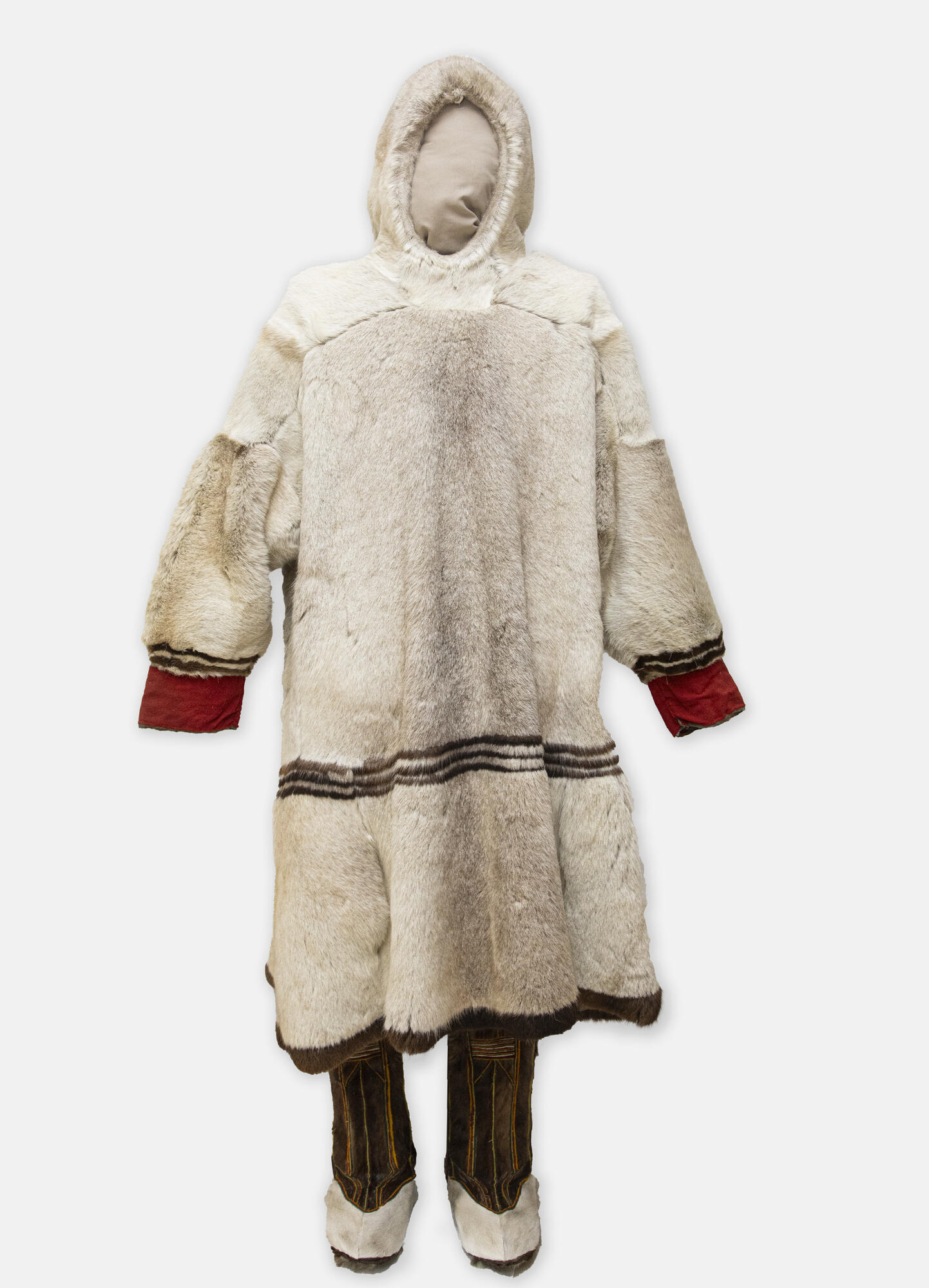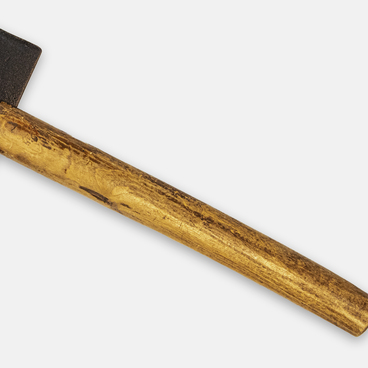The winter outerwear of the indigenous peoples of the North has remained unchanged for many centuries. Despite the development of factory production, many Nenets, Mansi, Komi, and Khanty still sew summer and winter clothes by hand. The clothes should be well adapted to the harsh climatic conditions of the North and outdoor labor.
In summer, the clothes protect the northerners from annoying insects, and in winter — from cold weather, with temperatures getting as low as -60°C. Clothes are made of reindeer hides, and each part of the hide has its own purpose. For example, the soft hides of young deer are used for linings, thick fall and winter hides — for warm coats, the short and dense hide from the leg of a deer — for shoes, and foreheads — for bags and hoods.
The design of northern clothing and footwear is very practical. For example, the wide armholes of winter outerwear allow the wearer to take the hands out of the sleeves and perform some simple tasks without taking off the coat. Mittens are often sewn to the sleeves to prevent them from being lost on the road, which would be equal to getting frostbite. The soles of winter boots are lined with stiff fur, with the pile placed opposite the moving direction so that the wearer does not slip while climbing.
The basic elements of Nenets clothing are a fur malitsa for men, a panitsa for women, and high fur boots known as pimy. In freezing weather and snowstorms, the Nenets wear a sovik over the malitsa. It is also known as a “savak” and “sook” among the Nenets and as “sokuy” and “gus” among the Russians.
A sovik is sewn with fur outward and pile down so that snow and droplets of water can easily roll down the clothing. Winter or fall deer hide is used for a sovik. It has a long hem, sometimes made of fur of a different color, with white fur considered to be the most beautiful and expensive option. A sovik is not tied with a belt.
A sovik can be made not only of fur but also of cloth. This version is worn in summer over the malitsa in bad weather. A summer sovik is shorter than a winter one and is usually made of black, gray, dark blue, or green cloth. A sovik is worn only outside the house: it is not brought inside the chum but instead left outside in a wooden sled, with the sleeves and hood carefully folded inside.




